
Roseau, Commonwealth of Dominica, West Indies

 |
Dominica Botanic Gardens Roseau, Commonwealth of Dominica, West Indies |
 |
| © Dominica Academy of Arts and Sciences, Dec. 2004 | Home Page | Comments & Suggestions |Site Coordinator | Gardens Curator |
| Selected Trees and Shrubs: Albizia niopoides; Syn.: A. Caribaea, Pithecellobium niopoides, Common name: Caribbean Albizia |
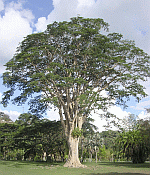
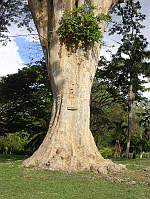
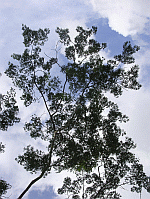
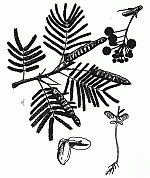
|
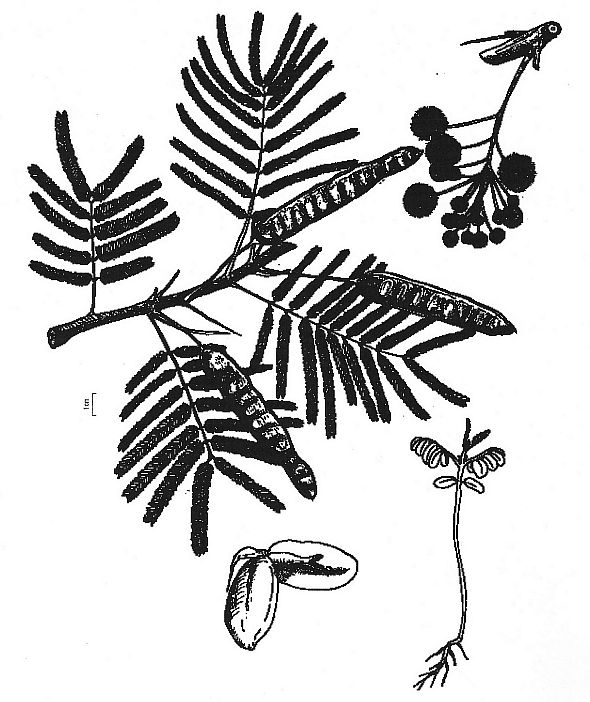 Source: E.M. Flores Plant Family: Belongs to the Mimosaceae family whose members range from the imposing Saman or Rain Tree (Samanea saman) to the diminutive, recumbent Sensitive Plant (Mimosa pudica). Description: Very large, very stately tree, up to 35 m in height (115 ft); large, yellowish, smooth trunk, powdery surface texture with exfoliating scales; wide-spreading, umbrella-shaped crown; leaves alternate and bipinnate, 9-12 cm long (3.5-4.7 in), with 5-10 pairs of opposite pinnae, each 3-5 cm long (1.2-2.0 in) with 30-55 pairs of pinnules 1-2 mm wide (0.04-0.08 in) by 5-9 mm long (0.2-0.35 in); wood heavy with medium texture, natural durability low but accepts preservatives well; roots rich in saponin; flowers white, fragrant and grouped in round, pedunculate heads, 1.5 cm across (0.6 in), flowering in March and April; fruit is flat, oblong, thin, dark tan pod, 6-14 cm long (2.3-5.5 in) by 1-2.5 cm wide (0.4-1 in), ripening August and September; one Gardens specimen-tree dominates slope to cricket field; tallest and most majestic tree in Gardens, about 27-30 m (90-100 ft) tall, with largest single trunk in Gardens, about 2.4 m across (7.6 ft), a veritable “forest giant”. Natural Habitat: Thrives in dry tropical forests up to 1000 m altitude (3250 ft), with 500-2500 mm rainfall (20-100 in) and pronounced 4-7-month droughts, on alluvial soils with good drainage; withstands high, hurricane-grade winds; propagation by seed. Origin and Distribution: Native to Trop. America and Southern Caribbean; now found throughout tropics with many specimens in sub-tropics; one specimen in Florida’s Fairchild Botanic Gardens reportedly is tallest tree in the state. Uses: Used as ornamental for its beautiful, majestic habit; heavy wood of medium texture, moderately easy to work and polishes well; use varies from heavy construction, such as railroad foundations, to light woodwork including furniture and floors; medicinally, S. American Indians use saponin-rich roots to heal contusions and angina (saponins produce soap-like foaming when mixed with water); boiled bark used to heal scorpion bites.
References: |
| © Dominica Academy of Arts and Sciences, Dec. 2004 | Home Page | Comments & Suggestions |Site Coordinator | Gardens Curator |